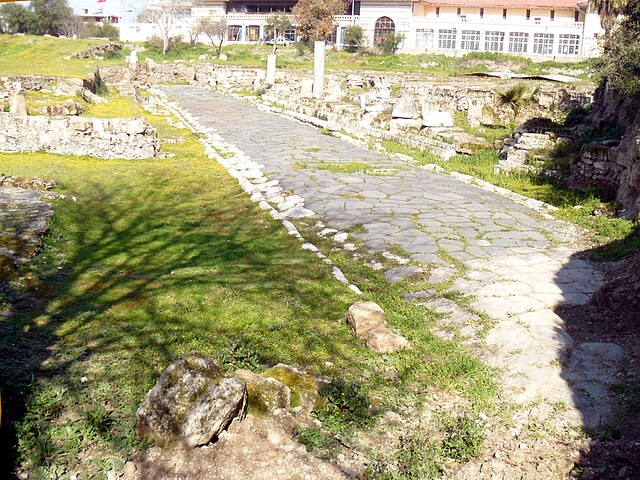
Why were Roman roads so straight? Roman roads were so straight because they were built to move soldiers from point A to point B as quickly and efficiently as possible.
Rome wasn’t the first civilization to build roads, but they were the first civilization to build a road network that crisscrossed an entire empire. The number of roads declined as they fell into disuse at the end of the Roman Empire, but at their peak, there were 29 highways, 372 great roads, and all of the roads that connected to them as well. There were over 400,000 km of roads. Some of these Roman roads still exist and a lot of them have been built over with modern roads. The Roman roads followed a direct and efficient route, which made them perfect for modern roads. If you are driving on a road in Europe and it seems remarkably straight, chances are that you are driving on an old Roman road.
The first Roman road was the Appian Way, which was built in 312 BC. It stretched for 261 km and went from Rome to Tarentum (south-east of Rome). It was begun by the Roman censor Appius Claudius Caecus, hence its name as the Appian Way. A censor was a magistrate or someone in charge of the census of a town. Rome had captured the surrounding area and become an empire before this road was built, but the new road helped them travel further and faster and the empire began to spread. Once they realized how useful these roads could be when mounting a military campaign, they started to build more.
What made Roman roads so effective? The most important part of a Roman road was how straight it was. Most roads that existed before Roman roads were made by the continued use of people, horses, or carts, and they were worn into the ground. These roads went from one town to the next town because those are the routes that people were most likely to take. That made them very twisty and indirect. The Romans realized that if a road was to be used to move troops, it would have to be direct and they built roads that didn’t go to small towns. The road went from one major town to another major town and if towns in between wanted to connect to that Roman road, they had to build the linking roads themselves. Roman roads also didn’t go around hills, but rather straight through them. Older roads that had been laid down by people and horses went around hills because that was the easiest course to take. The Romans wanted straight roads, so they cut gaps through the hills to build their roads. They also built bridges over rivers, rather than diverting to fording places.
The construction of the roads made them effective as well. The minor roads were not so well constructed, but the major roads were made of several levels. The first level was the natural soil, which was dug down into and then compacted to be as hard as possible. This was topped with a layer of compacted sand. On top of that was a layer of crushed rock and on top of that was a layer of mortar made from pottery pieces or stone. That was topped with a layer of Roman concrete and flat stones were set in the concrete. They put curbstones at the side of the road to mark the edge and to keep everything together. These different layers allowed water to sink down off the road and out of the sides without turning the whole road to mud. They made it very easy for the Roman soldiers to march on and the average Roman soldier was able to march over 30 km a day.
These roads enabled the Roman army to strike anywhere in the empire very quickly. They were vital for communication and for keeping the empire together. They were not cheap to make, but they more than made up for their cost. The Romans had the advantage that they had a lot of soldiers who they used to make the roads, basically working for free, and they probably took most of the materials for the roads from local areas. They tried to make roads that were well-built, so as to reduce the amount of repairs they would need.
The roads were built to carry the soldiers to where they needed to be, but they were also vital for trade and for carrying Roman culture to the edges of the empire, both of which were also very important when it came to controlling an empire as large as Rome’s. The roads also changed the layout of the land because towns appeared along the roads as waypoints for the soldiers and traders. These towns ended up growing into major cities.
After the Roman empire fell, the roads were still there and they were used by successive civilizations, but they didn’t repair them and they slowly became difficult to walk on. And this is what I learned today.
Sources
https://www.britannica.com/topic/Appian-Way
https://en.wikipedia.org/wiki/Roman_roads
https://www.worldhistory.org/image/17723/the-roads-of-ancient-rome
https://www.history.com/news/8-ways-roads-helped-rome-rule-the-ancient-world
https://en.wikipedia.org/wiki/Timeline_of_Roman_history
Image By Nedim Ardoğa – Own work, CC BY-SA 3.0, https://commons.wikimedia.org/w/index.php?curid=23301876

Pingback: What is a salt road?